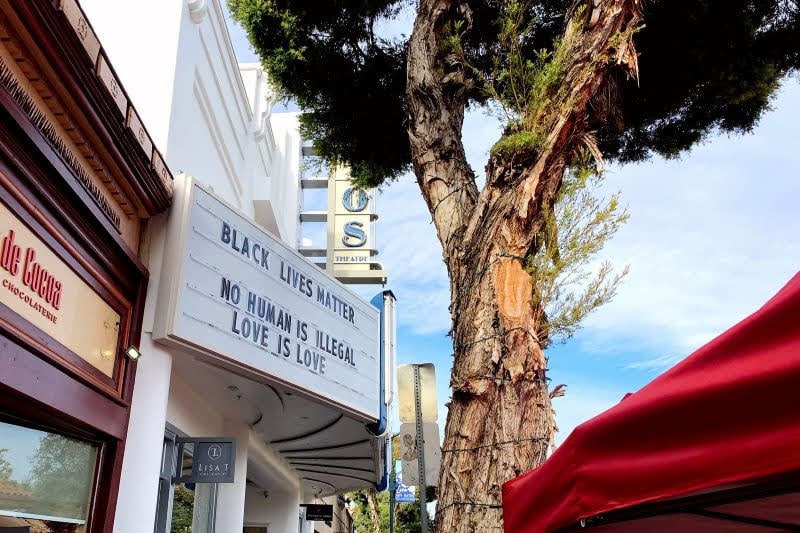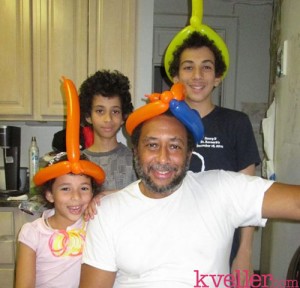My racial identity and my Jewish identity are inextricably tied to the day that marked the striking down of laws against intermarriage.
I was raised by my Italian grandma and my German grandpa in the white suburbs of Chicago. My dad was Black and my mom was white. My wise, patient grandma never strayed away from instilling a pride of this within me, even when a binary world would challenge the “me” in the middle of it. My grandma introduced me to the beauty of handmade pasta, knowledge of the saints she’d rejected since high school and phrases like “una ala volta”—one at a time. She also made sure I knew that I belonged to multiple worlds.
There was the world she could show me—insight into her Sicilian heritage and her deep-rooted struggle with the religion she had been brought into. Because my grandma challenged things as they were “meant to be,” she always instilled in me the power to define my own identity. While my grandma brought this wide space for exploring my mixedness—my Blackness—she also brought with it the strength for me to choose for myself a religion that aligned with my heart.
When I was in high school, I finally felt fully myself. Surrounded by Black people, white people, brown people and mixed people, I threw the idea of “choosing” out of my vocabulary. I could be super Italian, super Black and super proud. I’d sit in my religion classes of my Christian day school and I’d also write about Judaism whenever I could. Judaism gave me a connection to a history, community, ritual and tradition that I felt drawn to in my heart and soul.
Eventually, my annual mini Christmas tree was replaced with my menorah. My present and future would be filled with Shabbat candles, and the Shema—an important Jewish prayer—became a new nighttime song for me and helped pull the moon and universe closer to my heart. For me, Judaism wasn’t a discovery of something apart from myself or my family, but a coming home to my people, and my Black identity felt especially alive.
I went to my first Loving Day conference when I was 16. My mixed friend and I took a day off of school, got on the train and headed to downtown Chicago. It felt like the gathering was truly made for us. Our conversations were constantly filled with our explorations of what it meant to be mixed. Many of us came from households that required us to figure out both sides of our identity on our own, and we found those identities in each other.
When we arrived at the registration table that first time, we marched up—beaming with pride. On the table were samples from Black-owned hair salons catering to mixed hair, books about people who looked like us and around the room were so many mixed people. Light eyes to dark. All the shades of melanin. A kippah here and there. This room was my soul song at full blast.
Loving Day was the day I’d been waiting for. It was a day that celebrated love. Though the love recognized was interracial marriage, Loving Day felt more like a celebration of the love I had found for myself as a mixed person. The pride of my Blackness and my ancestors, the love of my Italian grandma and the traditions she taught me and the pride of my Jewish soul—all these loves had space to exist here fully and without judgement or expectation.
It was similar to the feeling of wholeness I had at the Loving Day Conference when, after years of holding my Jewish learning in my heart and mind, I finally entered a synagogue and became mixed in one more special way. I breathed in my future and exhaled with a sense of home once again when I left the mikvah and converted.
Loving Day marks an annual celebration of my mixedness. I reflect on where I’ve been, where I am and where I hope to go. And annually I celebrate the day that I converted—not as a marker of the start of my Judaism, or the end of the Jewish adventure I’d been on for so many years, but as a day I sit in peace, joy and celebration.
And here I am, 30 years old, still carving out time to celebrate Loving Day and its impact on my life. I sing the Shehecheyanu (a Jewish prayer to celebrate special occasions) and read my book of Harlem Renaissance poetry. I thank the universe for being Black, Jewish and Italian—and I celebrate Loving Day. I hold closely the hand of my beloved, Charles, whose Ashkenazi Jewish self always celebrates my mixedness, my Blackness and my Jewishness.
The fact that Mildred and Richard’s last name was Loving, the fact that their day made me love myself more fully—my Black dad, sister, and brothers more fully, my Italian grandma and German grandpa more fully, my Ashkenazi Jewish husband more fully—is cause for celebration.
This article is published with permission of 18Doors join us to celebrate Multiracial families on May 21st.









